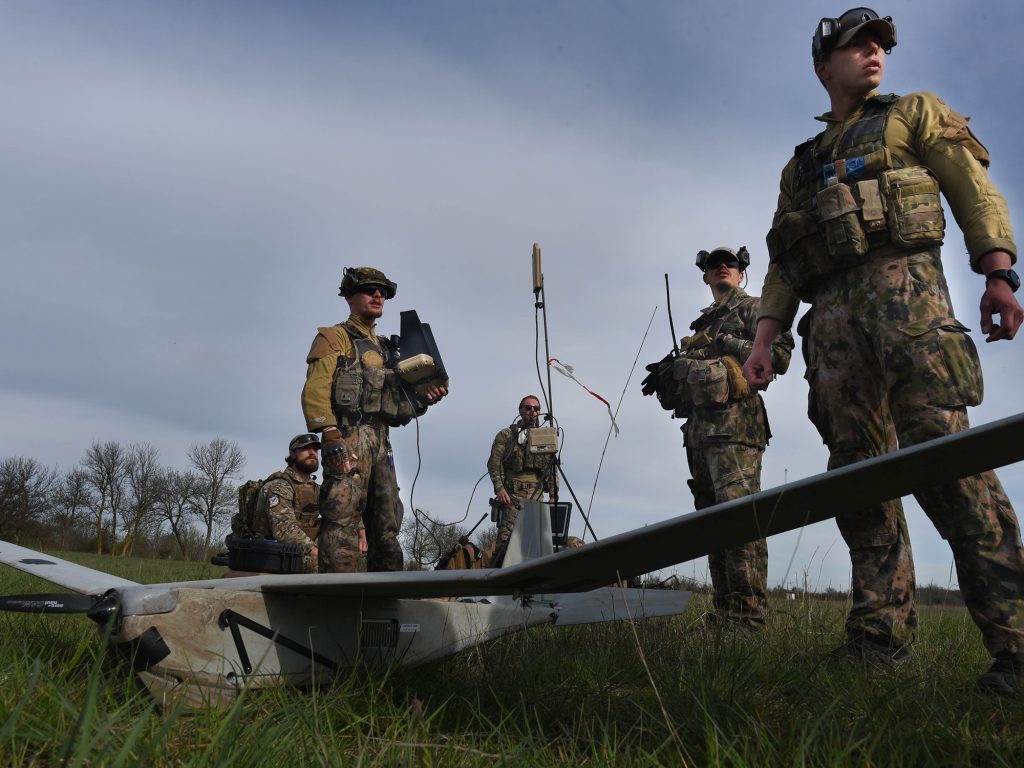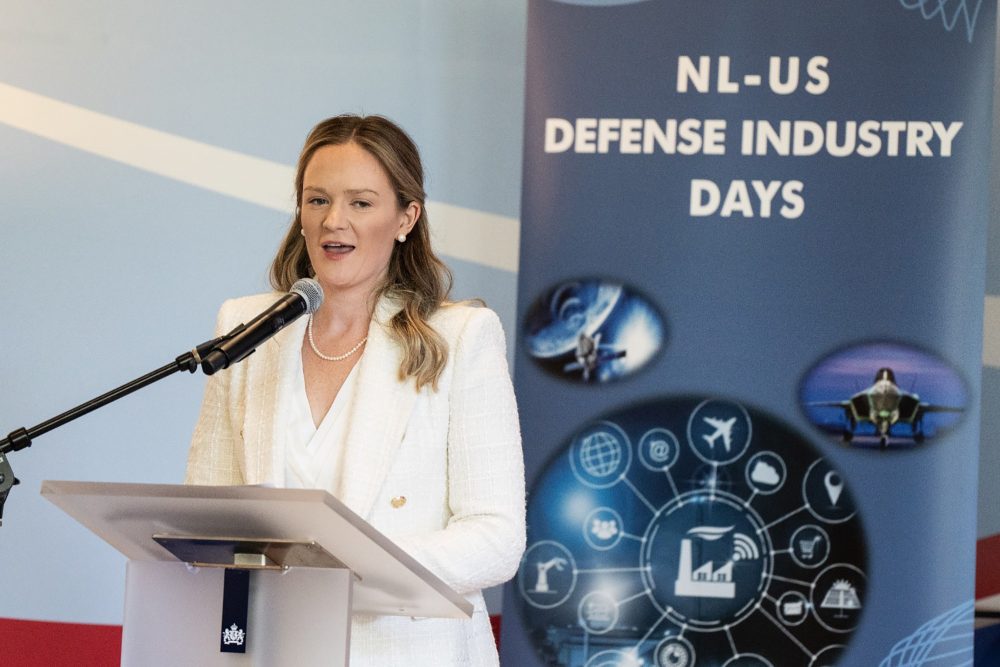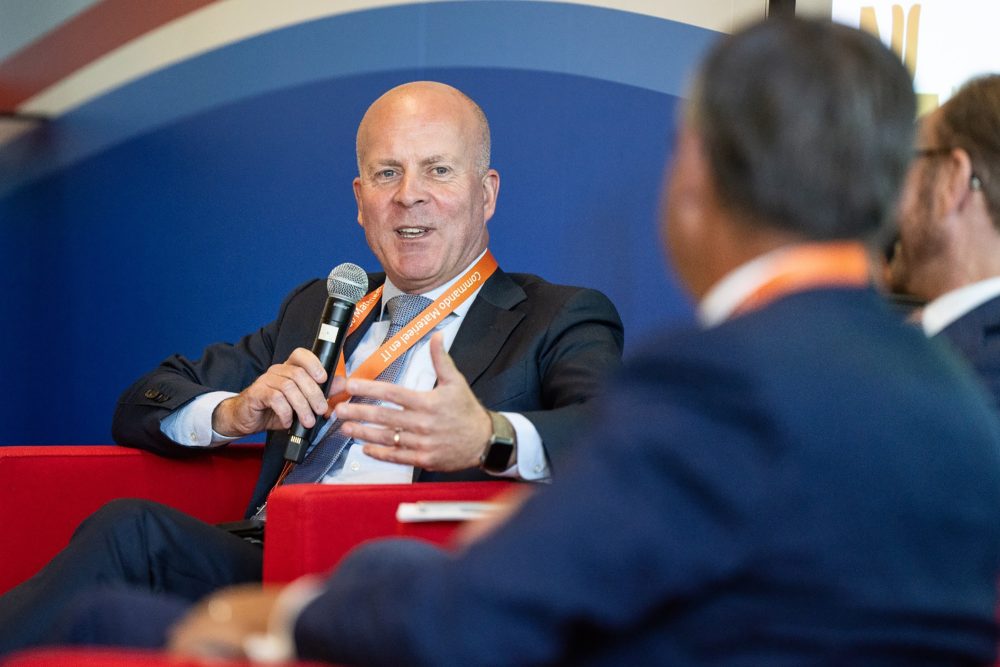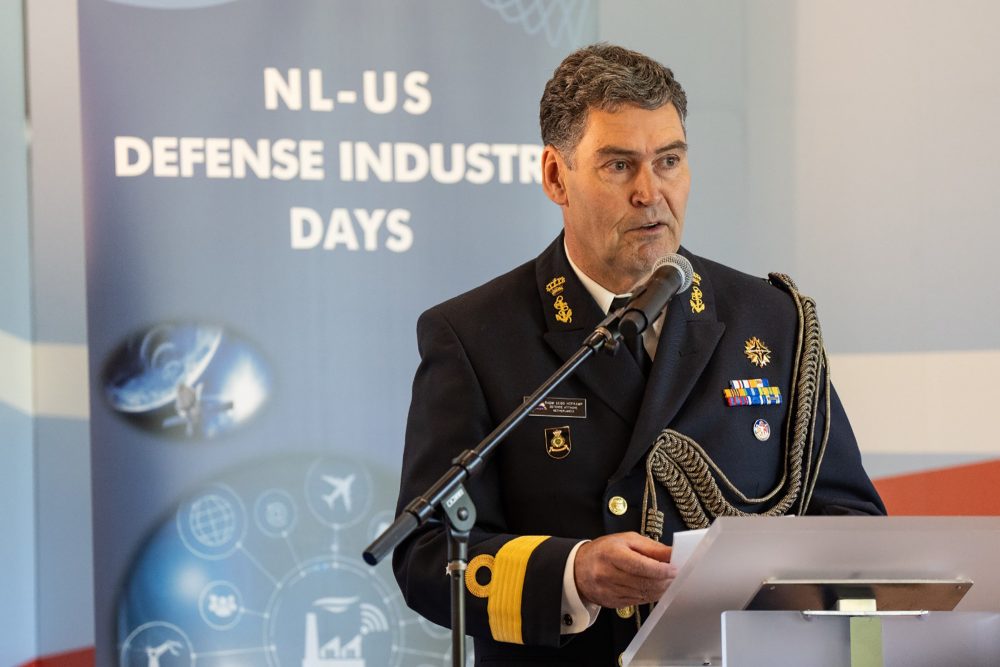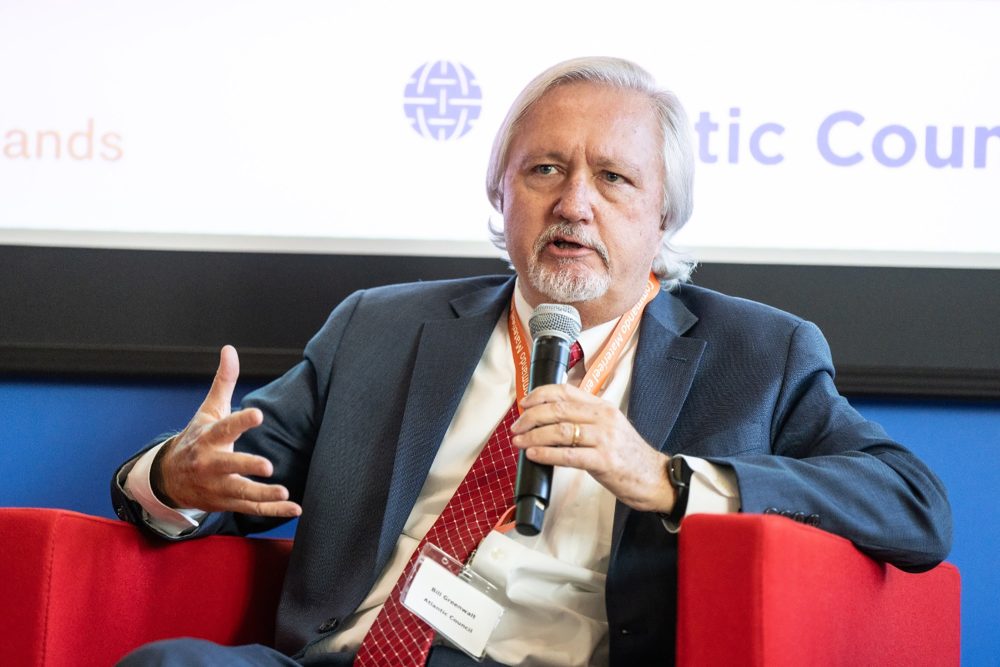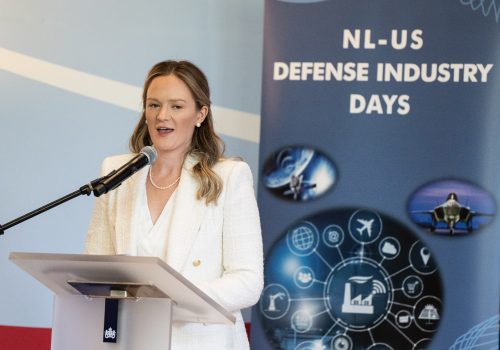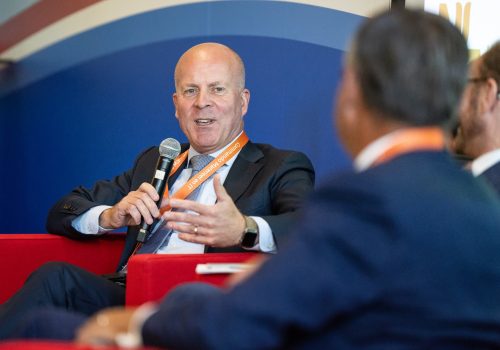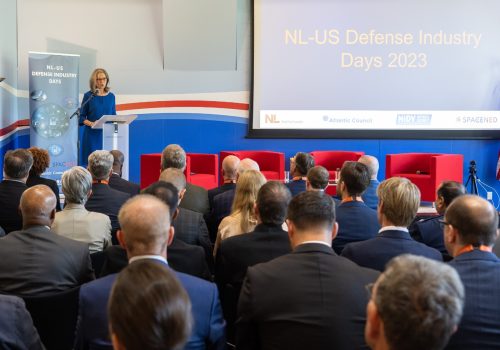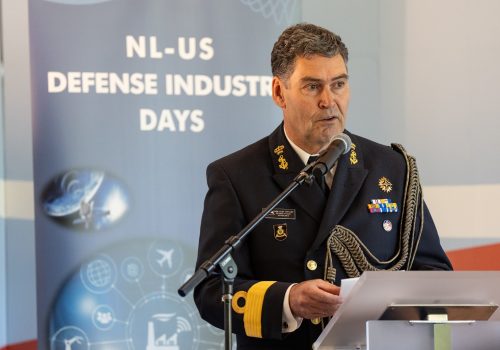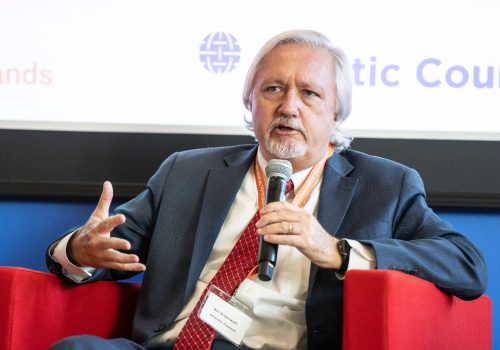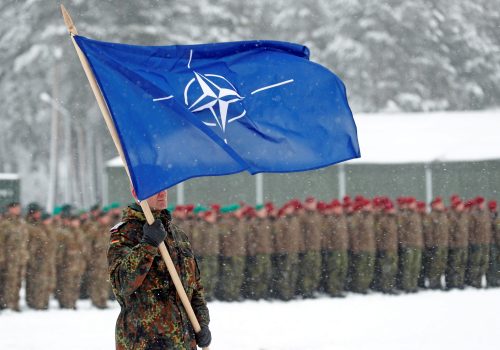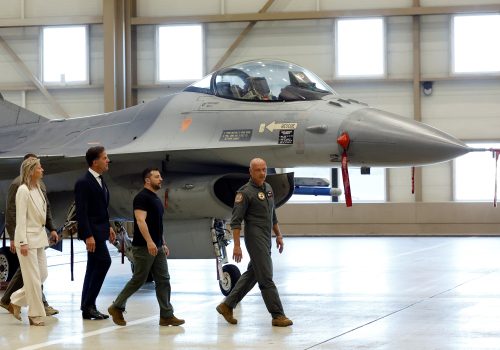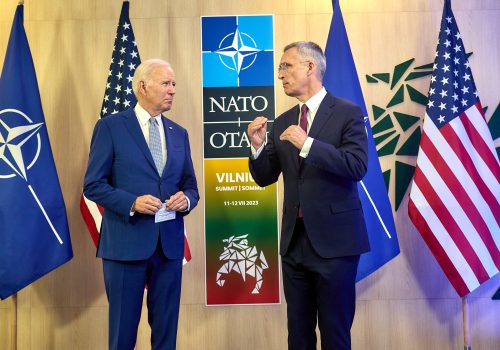NATO and its members are facing the most uncertain security environment since the end of the Cold War. The Alliance will not be ready to face that complex environment if each nation continues to go about upping its military might alone.
Developments—ranging from Russia’s brutal war in Ukraine to increasing aggression from China—have unearthed alarming weaknesses in transatlantic defense-industrial capabilities. Allies have depleted stockpiles of ammunition in support of Ukraine’s resistance and the United States has been slow to deliver much-needed arms to Taiwan. Continuing production challenges and systemic rivals’ efforts to ramp up investments in critical emerging and disruptive technologies raise questions about the Alliance’s ability to defend every inch of its territory—much less prevail in a future war against a near-peer competitor.
Maintaining the Alliance’s warfighting edge will require NATO to leverage its greatest asset (one which Beijing and Moscow cannot match): its network of allies and partners. Robust relationships between allies and with the industry partners that fuel their military might will be imperative for building an enduring advantage.
Against this backdrop, more than 150 government officials and industry leaders from the United States and the Netherlands gathered in October at the Dutch embassy for the third annual NL-US Defense Industry Days. The conference—which the Atlantic Council co-hosted with the Dutch Ministry of Defence, the Netherlands Industries for Defence and Security, and SpaceNed—took stock of the state of the transatlantic industrial base and considered untapped opportunities to accelerate defense and technology cooperation between the US and transatlantic allies like the Netherlands.
Conference participants emphasized that by working together and with industry partners—in coordinating research and development, modernizing capabilities, propelling innovation, and improving interoperability—transatlantic allies can procure and deliver capabilities at the speed and scale needed in an increasingly complex environment.
When nations work together, not every country needs to invest in every capability: Each ally can contribute to bolstering collective defense and deterrence by bringing something different to the table. For example, Estonia has a robust cyber defense architecture, France has a highly competitive aerospace industry, and the Netherlands brings a deep bench of capabilities and advanced expertise in critical emerging and disruptive technologies—which can be leveraged by NATO allies to modernize their digital infrastructure and meet future warfighting needs. The Dutch foothold in niche markets such as ballistic missile defense, sensor systems, quantum technology, unmanned aerial vehicles, laser communication, satellites, and space technologies presents particular opportunities for accelerating innovation and driving research and development across the Alliance.
When each ally focuses on what they do well—and coordinates the development, production, and acquisition of capabilities that are complementary and interoperable—NATO can produce more, deliver faster, and execute combined military operations more effectively.
“Building allied is the best way to build our defenses,” Birgitta Tazelaar, Dutch ambassador to the United States, said at the conference. “Only then can we move at the speed of relevance. Together is the key; allied is the path.” Building allied, in addition to helping allies move quickly, also serves as a deterrent for malign competitors watching and weighing the repercussions of further aggression from afar.
When it comes to the Netherlands and United States, building allied has not fully panned out, despite the deep bilateral relationship between the two countries. William Greenwalt, former US deputy under secretary of defense for industrial policy and a speaker at the conference, said that Washington’s management systems and acquisition processes—which have lost their edge and are calibrated for peacetime—stifle the ambitions of the Netherlands and other trusted allies and partners. On top of that, he added, information sharing remains difficult, contracting and foreign military sales are slow, and strict rules and regulations that govern the export of defense technologies hamper transatlantic industrial competitiveness and make defense cooperation with the United States challenging.
However, there are steps that the United States, the Netherlands, and other trusted allies and partners can take today to overcome their industrial base challenges and accelerate cooperation, tilting the global playing field in favor of the transatlantic community and the values that define it. Below are those steps, as outlined at the NL-US Defense Industry Days:
- Work more closely with industry partners. The Pentagon and Dutch Ministry of Defense, as speakers and attendees noted on several occasions, do not produce anything themselves: businesses provide militaries with what they need. For this reason, domestic and foreign industry partners play a central role in surging production of conventional capabilities and breeding the next-generation technologies needed to win in a future conflict. Moving at the pace of the fight will require governments to establish industry-friendly contracting and procurement processes that create incentives for partnership and send a clear demand signal for what is needed most, both now and tomorrow.
- Reexamine defense export regulations. Washington’s peacetime management systems and acquisition processes have put the United States and its network of allies and industry partners on the back foot in the global race to maintain military superiority. The current export regime needs to be reexamined—or even “blown up” in the words of Greenwalt. To regain the industrial advantage, allies will need to establish new regulations that, while continuing to protect sensitive defense technologies from theft and exploitation by strategic competitors, encourage industrial base cooperation and information sharing.
- Establish faster and more flexible defense contracts. The rigidity of most defense contracts and overemphasis on fulfilling contractual obligations impede the development of novel concepts and stifle innovation. Enhancing speed and flexibility in contracts and regulations will increase agility and adaptability to a level commensurate with the pace of change in the evolving geopolitical environment.
- Move towards multi-year procurement. Current procurement and budget planning cycles are too short. Extending the government’s horizon beyond five years would send a clear demand signal to defense and technology companies, providing a degree of assurance and flexibility that would allow the companies to focus their efforts on mission-critical capabilities and to improve their agility in the development of consequential, next-generation technologies.
- Streamline standardization. A crucial barrier in the way of maximizing the potential of transatlantic defense technologies is the vast array of requirements and capabilities across countries. Harmonizing standards will help industry walk in the same direction globally and deliver interoperable material to warfighters quickly.
- Pool science and technology talent. As the Alliance looks to speed and scale the research and development of critical emerging and disruptive technologies, its members must be willing to follow the talent—wherever it may exist. Innovating at the speed of relevance will require the United States, in particular, to go where the expertise is and leverage the science and technology strengths of its network of allies and industry partners.
- Time coordination carefully. Transatlantic defense cooperation cannot be disjointed, and it cannot only happen at isolated points of the technology development cycle. Bolstering interoperability and supporting innovative ideas must happen early in the research and development phase of new platforms, as demonstrated by early Dutch cooperation in developing F-35s.
- Focus defense and technology cooperation. Conference attendees emphasized that cooperative efforts must be focused to allow allies and industry partners to set priorities and meet critical mission needs. Starting small will allow the United States, the Netherlands, and other transatlantic allies to operationalize the practical cooperation they seek instead of just talking about it. Conference participants pointed to space technology as one such area for focused transatlantic cooperation, with US and Dutch officials noting the possibility of further collaboration on space-based missile warning systems, laser communication, and photonics.
- Broaden the scope of AUKUS and the NTIB. The AUKUS trilateral defense partnership and the US National Technological and Industrial Base (NTIB) only tap into a subset of countries in the United States’ vast network of allies and partners around the globe. Conference participants argued that bringing in additional partners under an AUKUS+ framework—or extending the NTIB to other close allies with advanced capabilities and expertise like the Netherlands—would facilitate enhanced industrial cooperation.
- Look beyond the United States for innovation. Conference participants emphasized that transatlantic allies and partners cannot wait for the United States to innovate. European governments and their respective defense industries must not be afraid to show greater leadership in the innovation arena to get the best capabilities to their soldiers in the field at speed. The United States, as Conference participants explained, will come along if it is being outperformed by its European allies.
Securing NATO’s warfighting advantage in an era of strategic competition will only be possible with enhanced industrial base cooperation among allies. The Netherlands—a technological powerhouse with a resilient industrial base—can help lead coordination on transatlantic defense innovation. Much work still needs to be done to sharpen NATO’s technological edge but building relationships and finding avenues to leverage the strengths of trusted allies like the Netherlands will put the Alliance on a path to success as it approaches its seventy-fifth anniversary and landmark summit in Washington next year.
Joslyn Brodfuehrer is an assistant director with the Transatlantic Security Initiative.
See snapshots of the event
Further reading
Fri, Sep 15, 2023
The pathway to NATO’s ‘2/20’ goal is through real growth of defense spending
New Atlanticist By Wayne Schroeder
Next year’s NATO Summit in Washington is a golden opportunity for the Alliance to endorse a defense real growth pathway to its “2/20” guideline.
Tue, Aug 29, 2023
The Dutch are leading the way on military aid to Ukraine. Here’s why.
New Atlanticist By Timo S. Koster
The Netherlands is punching above its weight in terms of military aid to Ukraine, in part because the Dutch have felt firsthand the threat Putin poses.
Wed, Jul 26, 2023
NATO has a new plan to ramp up defense production. Is it enough?
New Atlanticist By Rob Murray
Underreported coming out of the Vilnius Summit, the Alliance's Defense Production Action Plan has the potential to transform how allies acquire what they need to defend themselves.
Image: A team of drone operators from the Dutch and Luxembourg militaries prepare to launch a Puma drone as part of the NATO exercise Eagle Royal. The NATO drill took place under French supervision, with a a few soldiers from the US, the Netherlands, Romania, and Luxembourg, as a mean to improve coordination for artillery missions. Photo via Reuters.
